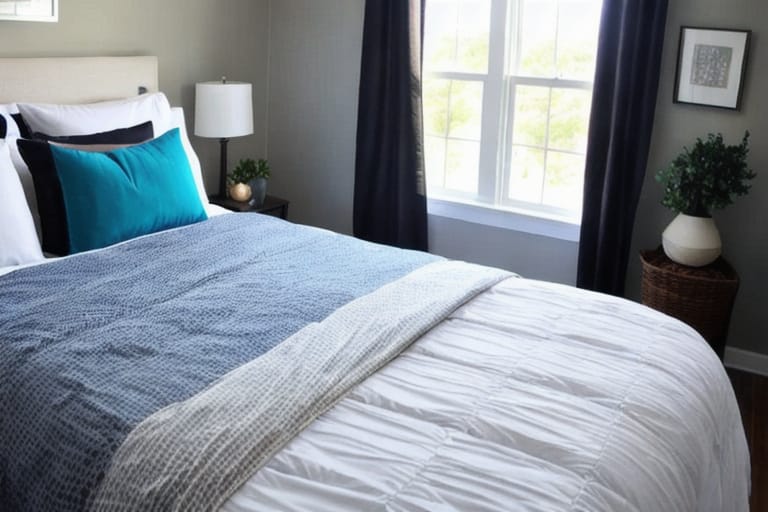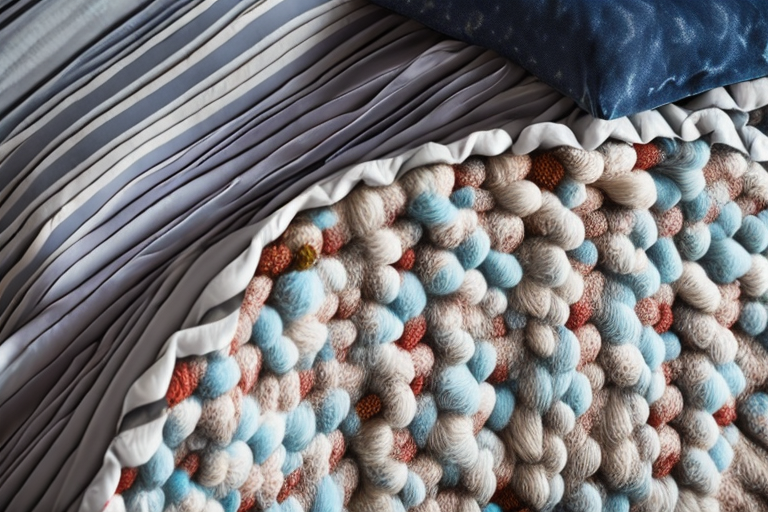Understanding the correlation between down duvet fill power, weight, warmth, and overall comfort.
When it comes to bedding, few things beat the comfort and luxury of curling up under a down-filled duvet. Often considered the crème de la crème of duvets, down duvets provide unparalleled softness and insulation quality due to the unique properties of down fill.
But with so many options on the market, choosing the right down duvet can quickly become an overwhelming decision. Understanding key concepts like fill power, fill weight, warmth levels and construction is essential to finding the perfect down-filled bedding for your needs.
This beginner’s guide breaks down everything you need to know as a down duvet novice, from fill power ratings to ethical down sourcing. Let’s get cozy!
What Gives Down Its Magical Warmth?
Before we dive in, it helps to understand why down makes such an excellent duvet filling. Down refers to the fluffy cluster of feathers located underneath the tougher exterior feathers of ducks and geese. These down clusters contain thousands of interlocking filaments that are incredibly effective at trapping air.
“Down is the Mercedes Benz of bedding fill. It provides the highest warmth-to-weight ratio of any natural filling.” – Becky Rapinchuk, Clean Mama
This unmatched breathability and thermal resistance is what enables lightweight down duvets to provide exceptional warmth while remaining surprisingly airy and breathable.
Determining Down Fill Power
The fill power of down refers to its loft and fluffiness. It measures the number of cubic inches one ounce of down occupies. So an ounce of 800 fill power down will loft up to fill 800 cubic inches when compressed.
- Higher fill powers correlate to increased insulation and durability
- Lower fill powers trap less air and compress down more over time
Most quality down comforters range from 600 to 900 fill power. Here’s how they compare:
| Fill Power | Quality & Performance |
|---|---|
| 600-649 | Decent insulation |
| 650-699 | Good value for money |
| 700-799 | Ideal for most people |
| 800-899 | Premium warmth & durability |
| 900+ | Ultra-luxurious performance |
Balancing Fill Weight and Warmth
Fill power only tells part of the story. Fill weight, or the total ounces of down in your duvet, plays a pivotal role too.
- Higher fill weights make heavier, warmer duvets
- Lower fill weights create lighter, cooler duvets
Most quality down duvets range from 15 oz to 30 oz fill weight. Finding the right balance depends on your climate and whether you sleep hot or cold.
Comparing Goose vs. Duck Down
Not all down is created equal. Goose down clusters tend to be larger and more resilient. This translates to better loft, durability and insulation compared to duck down.
- Goose down suitable for year-round use
- Duck down better for seasonal warmth
Hungarian goose down comes from large mature geese and reigns supreme when it comes to fill power, loft and longevity. But it demands a premium price tag too.
Exploring Down Alternatives

For those seeking a vegan or hypoallergenic duvet filling, down alternatives like rayon fiber or silk mimic some of down’s properties without animal products.
Pros:
- Animal and allergen-free
- Less expensive
- Easy to clean
Cons:
- Less insulation and breathability
- Loses loft over time
- Not as durable
Understanding Tog Ratings by Season
The tog rating system makes it easier to determine optimal warmth for your climate. Most quality down duvets range from 9-15 tog.
| Tog Rating | Best Use |
|---|---|
| 4.5-7.5 | Summer/Hot Sleepers |
| 7.5-12 | Spring & Fall/Temperate Climates |
| 13-15 | Colder Weather/Winter Use |
Besides climate, factors like bedroom size, window coverage and number of people in bed impact which tog rating works best.
Construction Affects Weight Distribution
Down duvets come in two main constructions which influence warmth, weight and durability:
Baffle Box
- Square fabric pockets trap down into sections
- Eliminates cold spots, maximizes loft
- Heavier due to more fabric
Sewn-Through
- Stitching attaches top and bottom layers
- Less durable long-term
- Lighter without fabric pockets
The duvet shell or outer layer also slightly impacts weight, based on materials used. Most shells range from 215-300 thread count cotton, sometimes with a sateen weave for added luxury.
Caring for Your Investment
To keep your down duvet looking fluffy and bright white:
- Frequently fluff with hands to maintain maximum loft
- Dry clean at least every 2 years to sanitize
- Store properly during summer to prevent clumping
With proper care, high fill power goose down can last over 10 years, while lower-end duck down may start deteriorating after 5 years.
Down Ethics: Sourcing and Sustainability
Ethical down production minimizes harm to geese and the planet. Look for certification programs like:
- Responsible Down Standard (RDS)
- Downmark Audited Program
Traceable supply chains and humane animal welfare standards preserve the future of the industry. Some brands even use repurposed recycled down as a more sustainable choice.
Choosing Duvets for Personal Comfort

Ultimately finding your perfect down duvet involves factoring in your:
- Climate and sleeping preferences
- Budget for fill power and weight
- Ethics regarding materials used
- Allergies or textile sensitivities
Testing out different tog ratings and constructions can help determine ideal levels of breathability, lightweight comfort or winter warmth for your needs.
Takeaways for Down Duvet Novices
Transitioning to a lightweight, cozy down-filled duvet can transform your sleeping experience. Here are key pointers for beginners:
- Focus first on fill power, then adjust fill weight as needed
- Goose down offers better durability and insulation overall
- Pick tog rating and shell based on climate preferences
- Proper storage and cleaning preserves longevity
- Vet supplier practices to pick ethical down options
Ready to snuggle up with exceptional comfort? Now you can shop down duvets like a pro!
Frequently Asked Questions
What’s the difference between a duvet and a comforter?
A duvet always requires insertion into a fabric duvet cover, unlike a comforter which is used on its own. But both contain similar down or down alternative fillings.
How do I know if my down duvet offers proper warmth?
Check the tog rating – higher numbers provide more insulation for colder climates. Also verify the fill power meets quality standards for desired loft and durability.
Why does my down duvet make crinkling noises?
This sound comes from slight clumping of the down clusters. Simply shake and fluff the duvet frequently to maintain even fill distribution and smooth out clusters.
Which is better for allergies: down or down alternative?
Down alternative fills like polyester or microfiber have hypoallergenic properties that prevent dust and allergens getting trapped. Some down can also be specially cleaned to remove allergens.
How do I wash a down duvet?
Carefully follow any washing instructions from the manufacturer to avoid damage. Most quality down is dry clean only. Avoid high heat, harsh detergents and putting in the dryer to prevent clumping.
What’s the RDS certification for down?
The Responsible Down Standard (RDS) audits and certifies textile supply chains to guarantee ethical treatment of ducks and geese during down production through strict protocols.
How long should a good down duvet last?
With proper maintenance like air drying and dry cleaning every 2 years, high quality down with 800+ fill power can last over a decade. Lower fill power down that is machine washed more often may only last 5 years.








